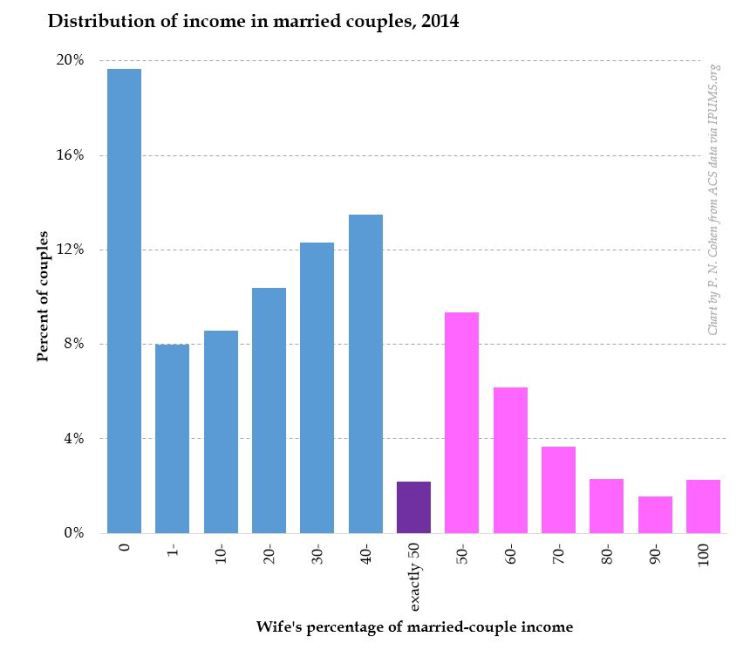They still don’t make as much as the men who are primary earners.
By Philip N. Cohen
Telephone operators at work in Stratford, East London, circa 1950. (Photo: Keystone View/FPG/Getty Images)
Nowadays, women are much more likely to earn more income than their spouse than they used to. But this is a shift, not a revolution, because very very few women are the kind of breadwinner that some men used to be.
Using data on 18- to 64-year-old married wives and their spouses (95.5 percent of which were men) from decennial censuses and the 2014 American Community Survey, here are some facts from 2014:
- In 2014, 25 percent of wives earned more than their spouses (up from 15 percent in 1990 and 7 percent in 1970).
- The average wife-who-earns-more takes home 68 percent of the couple’s earnings. The average for higher-earning men is 82 percent.
- In 40 percent of the wife-earns-more couples, she earns less than 60 percent of the total, compared with 18 percent for higher-earning men.
- It is almost nine times more common for a husband to earn all the money than a wife (19.6 percent versus 2.3 percent).
Here is the distribution of income in married couples (wife ages 18–64; the bars add to 100 percent):

Male and female breadwinners are not equivalent; making $0.01 more than your spouse doesn’t make you a 1950s breadwinner, or the “primary earner” of the family.

||
This story originally appeared on Sociological Images, a Pacific Standard partner site, as “25% of Wives Earn More Than Their Spouses, but We Probably Shouldn’t Call Them ‘Breadwinners.’”





